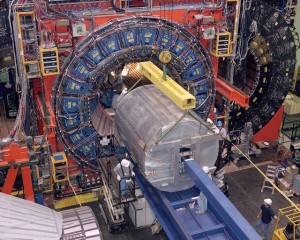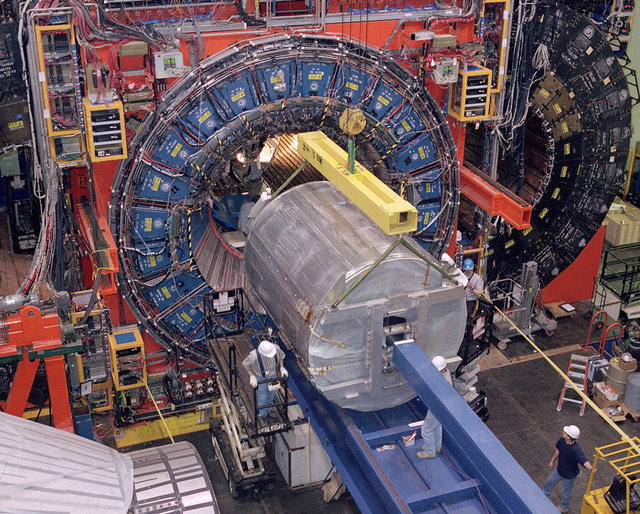 We have another LHC update! Did you know most of the matter we see as opposed to all the dark stuff out there is comprised of baryons, particles that are a combination of three quarks. The two most familiar baryons, protons and neutrons, are made up of the lightest quarks, the up and down either two up and one down or vice versa, respectively. But it’s also possible to construct similar baryons with the heavier, unstable quarks; many of these have been observed, and some of them have been incorporated into atomic nuclei within the brief time that they survive.
We have another LHC update! Did you know most of the matter we see as opposed to all the dark stuff out there is comprised of baryons, particles that are a combination of three quarks. The two most familiar baryons, protons and neutrons, are made up of the lightest quarks, the up and down either two up and one down or vice versa, respectively. But it’s also possible to construct similar baryons with the heavier, unstable quarks; many of these have been observed, and some of them have been incorporated into atomic nuclei within the brief time that they survive.
Baryons with strange and charm quarks have been spotted in various particle accelerators over the years, but those containing a heavy, bottom quark have been harder to come by. This is both because the weight of a bottom quark means that high energy collisions are needed to produce it it’s over 4GeV, compared to the up quark’s 3MeV, and because these particles only live for a very short time before decaying.
Nevertheless, a few baryons that contain a bottom quark had been spotted over the years: an up/down/bottom combination called the Λb spotted at CERN; a strange/strange/bottom called Ωb-; and a down/strange/bottom Ξb- the latter two from Fermi. The last was the first particle spotted to have quarks from all three generations.Yesterday, the CDF detector team at Fermilab released a paper in which they describe the neutral version of the Ξb, which contains an up, a strange, and a bottom quark. They recognized it by its decay pathway, which involves the repeated shedding of pions as the Ξ particle iteslf decays into lighter versions, eventually leaving a proton behind and five pions.
Detection of the particle tracks can allow computers to reconstruct where the particle originated, and thus figure out where each of their parent particles has decayed.25 of these events were seen in 4.2 inverse femtobarns of data, allowing the detector team to claim discovery at a significance of seven sigma anything above five sigma counts as a discovery, and measured its mass as 5.8GeV. In the process, they also spotted an unusual decay pattern of the Ξb- for the first time.The existence of the particle and its proposed mass are both happily within the range predicted by theory, so these new data don’t upset anything.
But their existence and behavior provides an important sanity check on quantum chromodynamics, which governs the interactions of quarks as they combine within baryons.
